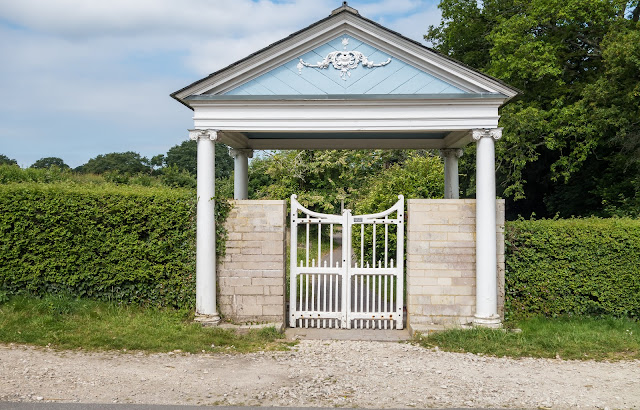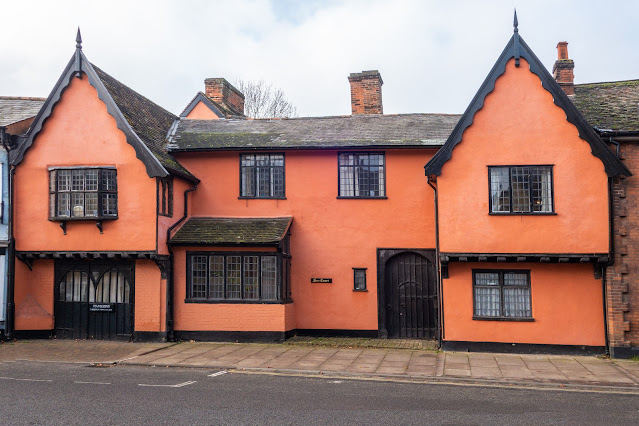Clouds Hill and TE Lawrence
Moreton, the start point for todays walk, is a village and civil parish in Dorset, England, situated on the River Frome about 8 miles (13 km) east of Dorchester. It has a number of long distance foot paths and cycle ways passing through it. So we started our walk from here.
Moreton has become synonymous with the memory of T. E. Lawrence, also known as Lawrence of Arabia. He rented nearby Clouds Hill cottage from his cousins, the Framptons, while serving at Bovington Camp. Following his death in 1935 he was buried in Moreton churchyard where his grave attracts tourists from around the world.
Who was TE Lawrence? - Some history, (courtesy of BBC):Lawrence was a British scholar, writer and soldier who mobilised the Arab Revolt in World War One and became famous as 'Lawrence of Arabia'.
Who was TE Lawrence? - Some history, (courtesy of BBC):Lawrence was a British scholar, writer and soldier who mobilised the Arab Revolt in World War One and became famous as 'Lawrence of Arabia'.
Thomas Edward Lawrence was born on 16 August 1888 in north Wales. His father, Thomas Chapman, had left his wife to live with Lawrence's mother, a governess. Lawrence studied at Oxford University and in 1909 visited Syria and Palestine. A year later he joined an archaeological dig in Syria, where he stayed from 1911 to 1914, learning Arabic. He developed a deep sympathy for the Arabs who had lived under Turkish rule for centuries. In 1914, Lawrence was part of an expedition exploring northern Sinai, carrying out reconnaissance under cover of a scientific expedition.
When war broke out, Lawrence became an intelligence officer in Cairo. In June 1916, the Arab Revolt began against Turkey, an ally of Germany, a revolt the British had worked hard to encourage. Lawrence became liaison officer and adviser to Feisal (also Faisal), son of the revolt's leader Sharif Hussein of Mecca. Lawrence was a superb tactician and a highly influential theoretician of guerrilla warfare. His small but effective irregular forces attacked Turkish communications and supply routes, tying down thousands of Turkish troops and preventing them from fighting against regular allied forces under the command of General Edward Allenby. Lawrence's overriding aim was to help the Arabs achieve military success that would lead to post-war self-government.
In June 1917, the Arab forces won their first major victory, seizing Aqaba, a strategically important Red Sea port. Success continued as they gradually made their way north. After the fall of Damascus in October 1918, Lawrence left for London and then the Paris Peace Conferences to lobby for Arab independence. Before the conference had even begun, the British and French had agreed on the future of Turkey's Arab territories. Lawrence was disillusioned by his failure to bring the Arabs self-rule, but was by now a celebrity, helped by the publicity efforts of American journalist Lowell Thomas.
In 1921, Colonial Secretary Winston Churchill appointed Lawrence as an adviser, but in 1922 he resigned and joined the Royal Air Force in an attempt to find anonymity. During the 1920s and early 1930s, he served both in the RAF and the Tank Corps under assumed names, but press intrusion continued to dog him. A private edition of his book 'The Seven Pillars of Wisdom' was printed in 1926. A full public edition was not released until after his death.
Lawrence left the RAF in February 1935 and died on 19 May following a motorcycle accident.
St Nicholas' Church yard in Moreton - burial place of TE Lawrence
Where the great man lived. What a surprise!
Lawrence first rented the cottage in 1923 while stationed at nearby Bovington Camp with the Tank Corps. He made it habitable with the help of a friend, then bought it in 1925 and used it as a holiday home. He described it as an earthly paradise and wrote "Nothing in Clouds Hill is to be a care upon the world. While I have it there shall be nothing exquisite or unique in it. Nothing to anchor me." The cottage had no electric lights and three living rooms, described as an eating room, book room and music room. For heat insulation Lawrence had the eating room lined with asbestos that was covered in aluminium foil, and he kept his food under glass domes. In the book room he installed a large leather divan, and in the music room above it he had his gramophone "with a huge amplifier horn", a leather sofa and chair.
In 1935 Lawrence left the Royal Air Force and lived at Clouds Hill. A few weeks later, at the age of 46, he suffered severe head injuries in a motorcycle accident close to the cottage, and died in the Bovington Camp hospital on 19 May 1935. The following year, his heir, his brother A. W. Lawrence gave Clouds Hill to the National Trust. It is now a museum, dedicated to Lawrence. It is open to visitors from March to the beginning of October, Seven days a week from 11am to 5pm
The cottage remains largely as Lawrence left it at his death. It features an exhibition detailing Lawrence's life, and most of his original furniture and possessions. The cottage reflects his complex personality and links to the Middle East.
The outhouse where Lawrence kept his motorcycles.
Strange!
A tank trundling down the road from Camp - base of the Tank Corps. Quite a sight I can assure you! Not your usual encounter on the roads at home!
After finishing our walk, which also included some Geocaches, we headed for St Oswald's Bay, near to Lulworth ...
......and watched the mist swirl in off the sea. It was here that Rosey took a picture of a butterfly that she had not seen before, the Lulworth Skipper.
Then headed home via West Lulworth, where I took this image of some lovely thatched cottages.













Comments